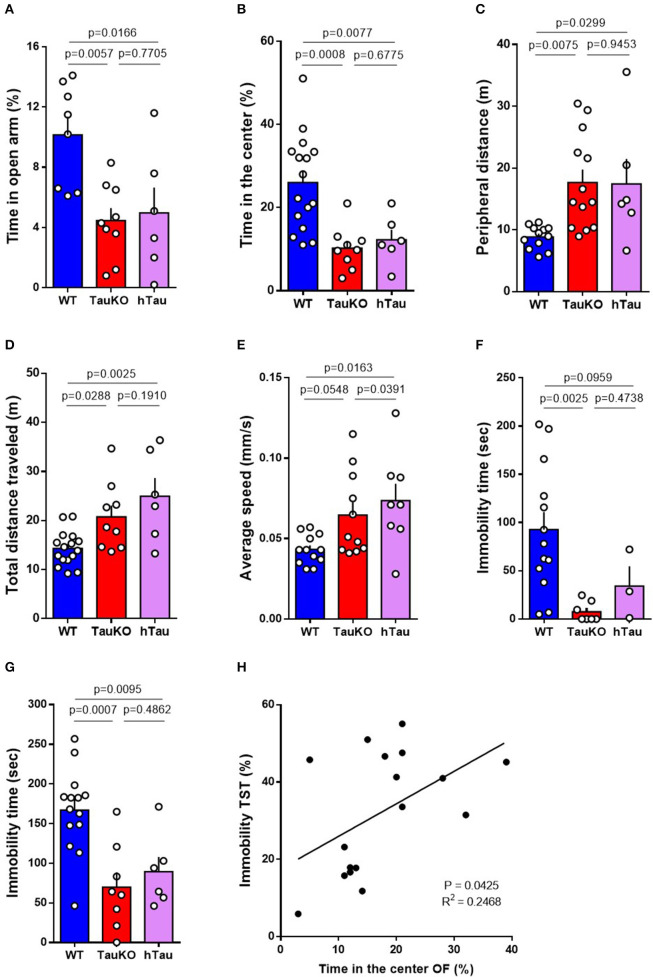Figure 2.
Patterns of anxiety-related behaviors in TauKO and hTau mice. (A) Analysis of the time spent in the open arms of the elevated zero maze expressed in percentage of time relative to the 5 min' test length. Test performed with 15–19 weeks old WT, TauKO, and hTau mice (n = 8 WT; 9 TauKO; 6 hTau). (B–E) Open field test performed with 15–19 weeks old WT, TauKO, and hTau mice (n = 12–16 WT; 9–13 TauKO; 6–8 hTau). (B) Analysis of the time spent in the center of the apparatus expressed in percentage of time relative to the 5 min' test length. (C) Analysis of the total distance moved in the periphery of the apparatus. (D) Analysis of the total distance traveled in the whole apparatus. (E) Analysis of the average speed during the test. (F) Time of immobility during the forced swim test performed with 15–19 weeks old WT, TauKO, and hTau mice (n = 13 WT; 7 TauKO; 3 hTau). (G) Time of immobility during the tail suspension test performed with 15–19 weeks old WT, TauKO, and hTau mice (n = 14 WT; 8 TauKO; 6 hTau). (H) Correlation of immobility time during the TST and time spent in the center of the OF for each mouse. Values expressed in percentage of time relative to the total length of the tests. Data are representative of at least two independent experiments.

